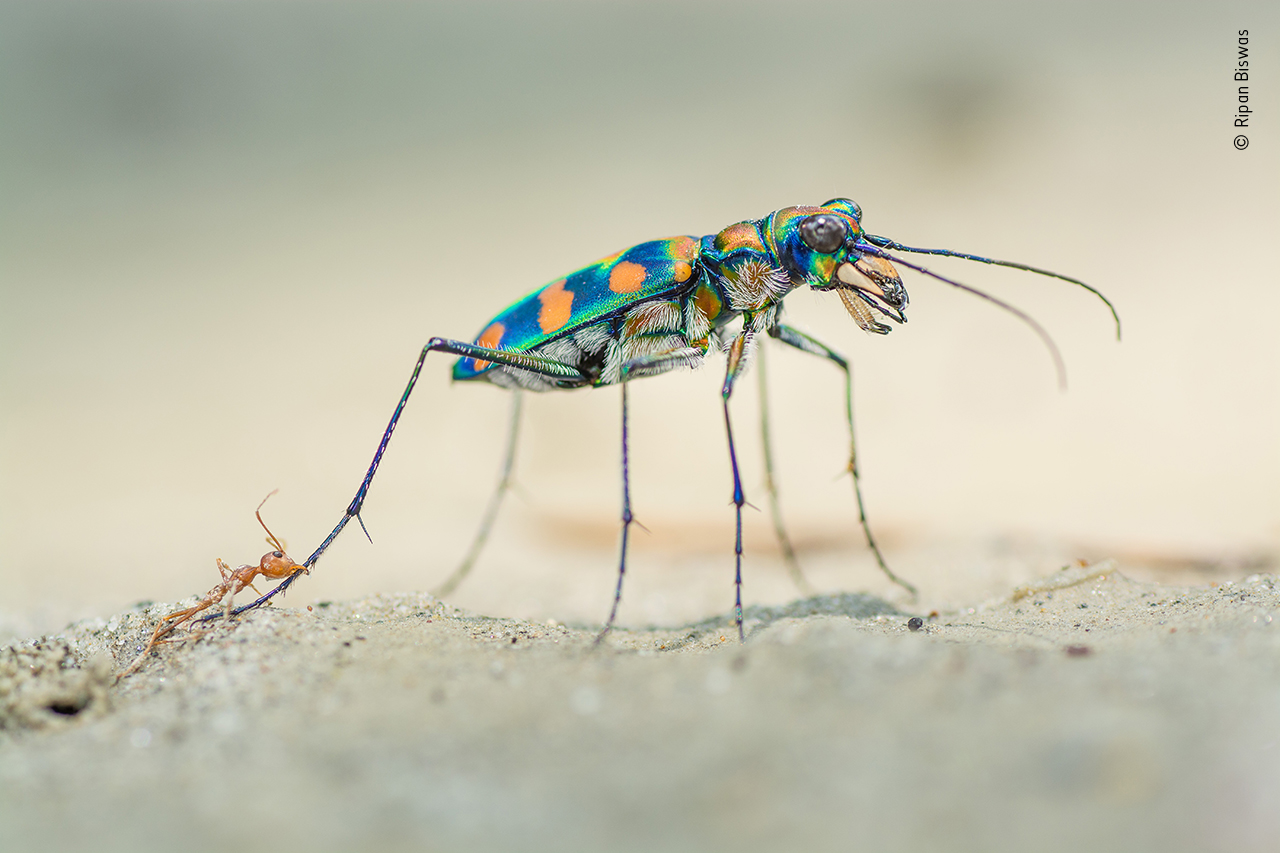Visit the exhibition
Discover the incredible stories of life on our planet through powerful photography and expert insight.
Tickets on sale now.

When a weaver ant colony went hunting for small insects on a dry riverbed, this beetle began to pick them off. In an act of defence, one of the ants bit into the predator’s hind leg, but the beetle swiftly turned and snipped its attacker in two. ‘The beetle kept pulling,’ says Ripan, ‘trying to rid itself of the ant’s grip.’
A tiger beetle’s bulging eyes are excellent for spotting prey, including flies, spiders and ants. It can sprint towards a meal so fast that it may struggle to see potential obstacles in time, holding its antennae out in front for guidance instead. Its bright orange spots may be a warning to predators that it uses poison – cyanide – for protection.
Discover the incredible stories of life on our planet through powerful photography and expert insight.
Tickets on sale now.

India
Ripan has been inspired by nature since childhood, enthralled by everything from the life and death of a grasshopper and the flashing green hue of a bee-eater to the sound of crushing dry leaves on the forest floor. His work focuses on insect macro photography and his photos have been published in magazines, including Sanctuary Asia and BBC Wildlife Magazine. Ripan has also received many national and international awards in wildlife photography competitions.
Help us harness the power of photography to advance scientific knowledge, spread awareness of important issues and nurture a global love for nature.